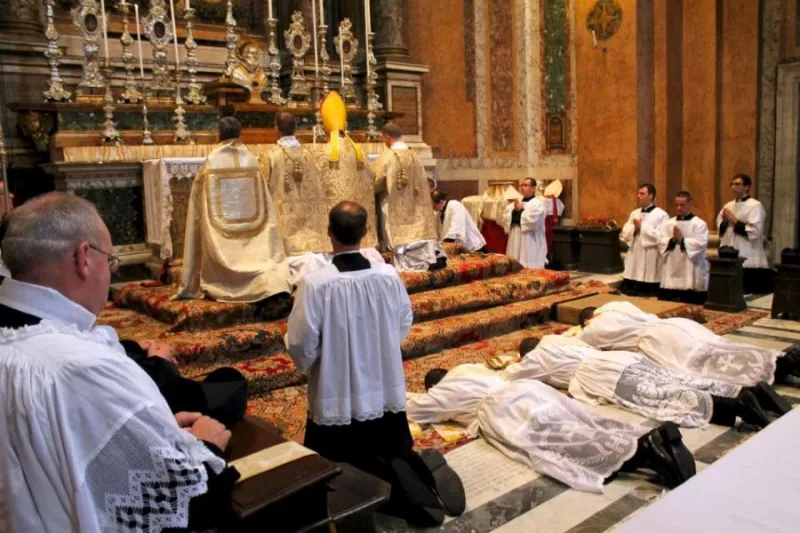
‘Sancta Nox’ album of Christmas Matins debuts at #1 on Billboard Traditional Classical Albums chart
 Seminarians of the FSSP’s International Seminary of St. Peter. / Photo courtesy of Sophia Institute Press.
Seminarians of the FSSP’s International Seminary of St. Peter. / Photo courtesy of Sophia Institute Press.
Denver Newsroom, Oct 8, 2021 / 17:01 pm (CNA).
On Sept. 28, a community of seminarians from the Priestly Fraternity of Saint Peter’s European seminary released an album of Christmas Matins, “Sancta Nox: Christmas Matins from Bavaria”. This week, the 17-song collection topped the Billboard’s Traditional Classical Albums chart.
“We are very surprised and grateful that people have already found this recording, and humbled that they have decided to add this music to the Christmas experience and traditions,” said Manuel Vaz Guedes, one of the singers, who is from Lisbon.
Recorded in surround sound at St. Magnus Abbey, Bad Schussenried in Germany, the album features mostly Gregorian chant, sung by seminarians of Saint Peter Wigratzbad Seminary. The abbey was built in the 12th century, with acoustics “perfect” for recording Gregorian chant, said Vaz Guedes.
The seminarians go to the abbey from time-to-time to celebrate special feast days, said Vaz Guedes.
“It was a very inspirational setting for recording this music,” he said.
The album includes a multi-lingual arrangement of “Stille Nacht”, along with several songs arranged by the seminarians themselves.
“We set about bringing our very best to recording music that was representative of the beauty found in the truth,” said Vaz Guedes, who discovered he could sing through Gregorian chant. “I think music is one of the most perfect ways of exteriorizing the faith and one of the most profound ways to pray to God.”
Matins are part of the Divine Office, which priests and monks pray every single day. In the album, Vaz Guedes said, listeners will find the “life and prayer of a seminarian” during Christmas.
“Christmas Matins have a great importance because they precede, immediately, the Christmas night Mass and one of the most solemn and beautiful moments of the liturgical year,” Vaz Guedes said. “We wanted to share how we pray on Christmas night.”
The seminarians recorded the album under the direction of Christopher Alder, a Grammy Award-winning classical music producer and Christian Weigl, a Grammy Award-winning engineer.
“The uniqueness of this recording resides in the fact that we are very young singers singing very ancient and venerable music,” said Vaz Guedes. “The average age of our group is 25 and the average age of the music we are singing is probably 800. That’s a very gratifying collaboration to be part of.”
The music, Vaz Guedes said, can be enjoyed by a wide audience, including listeners who prefer traditional sacred music, as well as those who want to experience peace.
“We must be attentive to the words we are saying and to the beauty of the melody we are singing,” he said. “ We can meditate on the words because they are the formal part of the prayer—they are the prayer we address to God—But we have the opportunity to do it [while] enjoying the beauty of the melody or the harmony, because the beauty of music is a participation of the perfect beauty that is God.”
The FSSP’s North American seminary, Our Lady of Guadalupe, had in 2017 released an album featuring the chants of the Requiem Mass.




